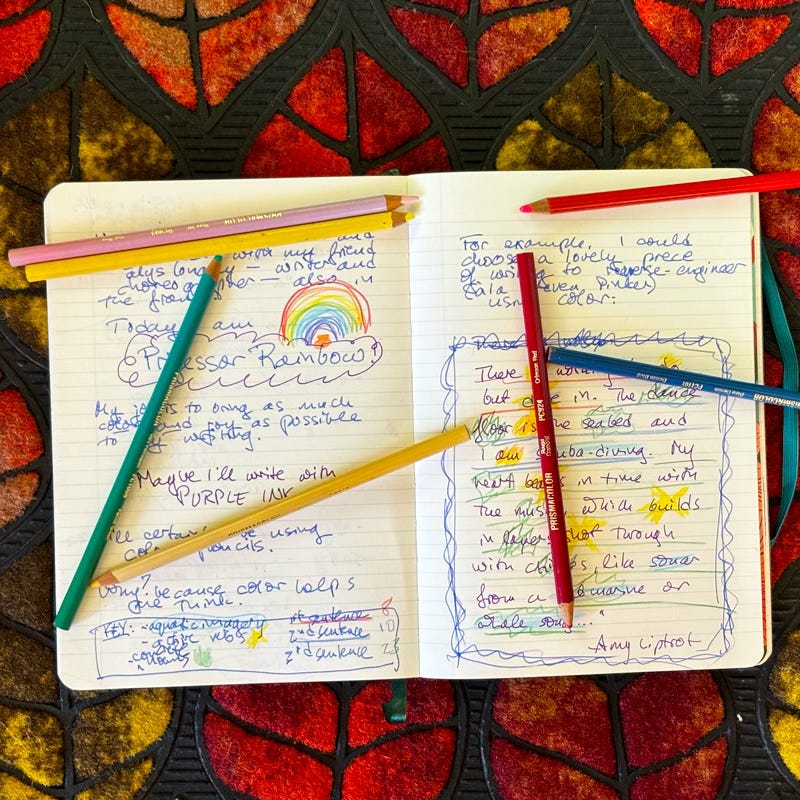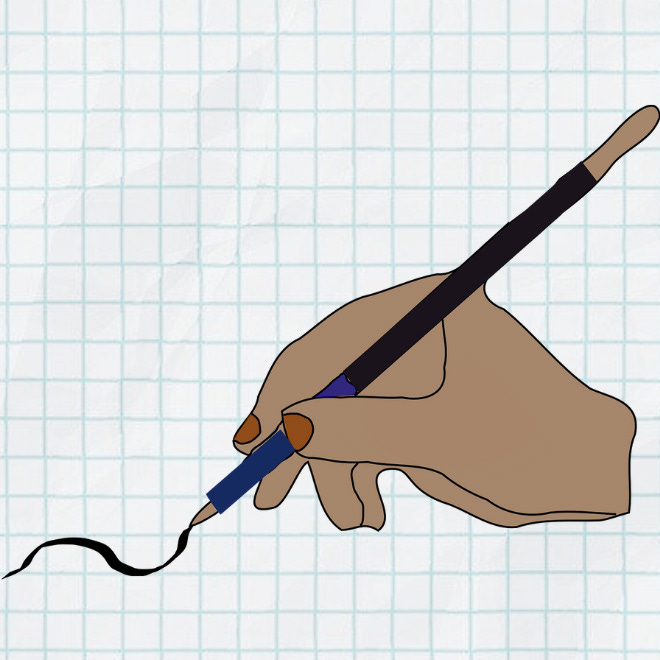Day 26: Write in color
From Helen Sword, creator of WriteSPACE
Professor Rainbow comes to town, with thanks to Jillian Hess from Day 13, “Create your writing alter egos”
(Notebook scribblings and photo by Helen Sword)
Color helps us think, and color brings us joy. That’s a winning combination for any writer!
Looking back over my own scholarly life, I can see that my wordcraft has always been suffused with color:
In high school and college, I used Crayola crayons to highlight patterns of imagery in the literary texts I studied — marking up Hamlet’s soliloquy, for example, in Burnt Orange (to be) and Indigo (not to be), or Dylan Thomas’ “Fern Hill” in Periwinkle, Forest Green, and Goldenrod: “And nothing I cared, at my sky blue trades, that time allows / In all his tuneful turning so few and such morning songs / Before the children green and golden / Follow him out of grace . . . .”
As an early-career academic, I sublimated my pre-tenure stress into a shopping spree at Staples, loading up on colored file boxes and folders to organize my contributions to Research (blue), Teaching (green), and Service (yellow).
Later, as a scholar of academic writing, I developed a diagnostic tool called The Writer’s Diet, which uses color-coded highlighting to help writers recognize patterns of excess and clutter in their prose.
And don’t even get me started on all the different ways that I’ve used colorful analog tools such as paper, notebooks, markers, stickers, washi tape, and post-it notes to organize information and illuminate key ideas. Nor has the digital realm escaped my color mania. (Did you know that you can change the default colors in Track Changes to make your editorial suggestions look like willowy green branches or cool blue rivers rather than bloody red slash marks?)
Once upon a time, I regarded my passion for color as a quirky manifestation of my Younger Self: creative, irreverent, but certainly not scholarly. Most of my academic publications, after all, took the form of black letters marching with military precision across stark white pages — no fuchsia fonts or chartreuse curlicues anywhere in sight.
In recent years, however, as I’ve learned more about the neuropsychology of color, I’ve come to understand writing in color as a sophisticated intellectual and emotional strategy, not just child’s play.
Feel free to adapt this prompt to suit your own ways of seeing, thinking, and finding joy in writing:
Today, write in color — whatever that means to you.
Are you looking for more creativity and color in your scholarly life? Step into the WriteSPACE, a vibrant international writing community with members in 30+ countries. You’ll get premium access to resources, workshops, and tools designed to help you hone your wordcraft, sharpen your style, and coax your writing gently but firmly out the door! Click here to try free for 30 days.






“Writing in color [is] a sophisticated intellectual and emotional strategy, not just child’s play.” -- This is such a perfect example of how following delight and intrinsic motivation can help us find (verifiably) effective approaches to thinking and writing. Thanks for leading the way, Helen!
You know how much I love this! I've been adding more color to my notebooks since our conversation last week and it's been delightful!